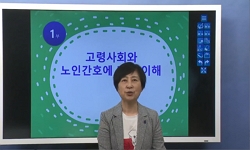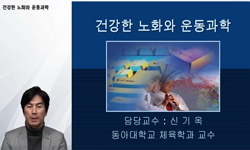PURPOSE: Reduced muscular strength is a key player in loss of physical function and quality of life in older adults. It has been reported that eccentric training has positive effects on the preservation of eccentric strength, produces less delayed ons...
http://chineseinput.net/에서 pinyin(병음)방식으로 중국어를 변환할 수 있습니다.
변환된 중국어를 복사하여 사용하시면 됩니다.
- 中文 을 입력하시려면 zhongwen을 입력하시고 space를누르시면됩니다.
- 北京 을 입력하시려면 beijing을 입력하시고 space를 누르시면 됩니다.


Effects of Lower Extremity Eccentric-Based Training on Muscle Strength and Physical Function in Older Adults: A Randomized Controlled Pilot Trial
한글로보기https://www.riss.kr/link?id=A106467270
- 저자
- 발행기관
- 학술지명
- 권호사항
-
발행연도
2019
-
작성언어
English
- 주제어
-
등재정보
KCI등재,SCOPUS
-
자료형태
학술저널
-
수록면
346-354(9쪽)
-
KCI 피인용횟수
0
- 제공처
-
0
상세조회 -
0
다운로드
부가정보
다국어 초록 (Multilingual Abstract)
PURPOSE: Reduced muscular strength is a key player in loss of physical function and quality of life in older adults. It has been reported that eccentric training has positive effects on the preservation of eccentric strength, produces less delayed onset muscle soreness, and has a lower metabolic cost for older individuals. Therefore, the present study investigated the effects of eccentric-based training on skeletal muscle strength and physical function in older adults.
METHODS: Sixteen healthy older subjects (over the age of 65) participated either in eccentric training group (ETG, n=8) or in conventional resistance training group (CTG, n=8) twice a week for eight weeks. The ETG group performed motorized eccentric training, and the CTG group performed a leg press using air pressure. Physical function and muscular strength assessments were performed before and after 8 weeks. The primary outcomes for physical function included gait speed, stair climbing, and the chair stand test, and the secondary outcomes included muscle strength and power.
RESULTS: The ETG group demonstrated significant improvements in physical function (gait speed and stair climbing) and muscle strength (isokinetic strength and power in knee tests) (p<0.05) compared to the CTG group after 8 weeks. There were no significant differences for chair stand test (p>0.05) after 8 weeks.
CONCLUSIONS: Motorized eccentric-based training was more effective in improving muscle strength and physical function in aged individuals than conventional resistance training, which s suggests that eccentric training is may be more beneficial for older individuals to improve overall physical function.
참고문헌 (Reference)
1 임재영, "Therapeutic potential of eccentric exercises for age-related muscle atrophy" 한국한의학연구원 5 (5): 176-181, 2016
2 Alcazar J, "The sit-to-stand muscle power test : An easy, inexpensive and portable procedure to assess muscle power in older people" 112 : 38-43, 2018
3 Ibrahim N, "The health-related quality of life among pre-diabetics and its association with body mass index and physical activity in a semi-urban community in Malaysia--a cross sectional study" 14 : 298-, 2014
4 Roig M, "The effects of eccentric versus concentric resistance training on muscle strength and mass in healthy adults : a systematic review with meta-analysis" 43 (43): 556-558, 2009
5 Tiedemann A, "The comparative ability of eight functional mobility tests for predicting falls in community-dwelling older people" 37 (37): 430-435, 2008
6 Chen TC, "Superior effects of eccentric to concentric knee extensor resistance training on physical fitness, insulin sensitivity and lipid profiles of elderly men" 8 : 209-, 2017
7 Peiffer JJ, "Strength and functional characteristics of men and women 65 years and older" 13 (13): 75-82, 2010
8 Altman DG, "Statistics notes. Treatment allocation in controlled trials: why randomise?" 318 (318): 1209-, 1999
9 Pinto RS, "Shortterm strength training improves muscle quality and functional capacity of elderly women" 36 (36): 365-372, 2014
10 Krivickas LS, "Sex differences in single muscle fiber power in older adults" 38 (38): 57-63, 2006
1 임재영, "Therapeutic potential of eccentric exercises for age-related muscle atrophy" 한국한의학연구원 5 (5): 176-181, 2016
2 Alcazar J, "The sit-to-stand muscle power test : An easy, inexpensive and portable procedure to assess muscle power in older people" 112 : 38-43, 2018
3 Ibrahim N, "The health-related quality of life among pre-diabetics and its association with body mass index and physical activity in a semi-urban community in Malaysia--a cross sectional study" 14 : 298-, 2014
4 Roig M, "The effects of eccentric versus concentric resistance training on muscle strength and mass in healthy adults : a systematic review with meta-analysis" 43 (43): 556-558, 2009
5 Tiedemann A, "The comparative ability of eight functional mobility tests for predicting falls in community-dwelling older people" 37 (37): 430-435, 2008
6 Chen TC, "Superior effects of eccentric to concentric knee extensor resistance training on physical fitness, insulin sensitivity and lipid profiles of elderly men" 8 : 209-, 2017
7 Peiffer JJ, "Strength and functional characteristics of men and women 65 years and older" 13 (13): 75-82, 2010
8 Altman DG, "Statistics notes. Treatment allocation in controlled trials: why randomise?" 318 (318): 1209-, 1999
9 Pinto RS, "Shortterm strength training improves muscle quality and functional capacity of elderly women" 36 (36): 365-372, 2014
10 Krivickas LS, "Sex differences in single muscle fiber power in older adults" 38 (38): 57-63, 2006
11 Hakkinen K, "Serum hormones and strength development during strength training in middle-aged and elderly males and females" 150 (150): 211-219, 1994
12 Shafiee G, "Prevalence of sarcopenia in the world : a systematic review and meta-analysis of general population studies" 16 : 21-, 2017
13 Roig M, "Preservation of eccentric strength in older adults : Evidence, mechanisms and implications for training and rehabilitation" 45 (45): 400-409, 2010
14 Cadore EL, "Neuromuscular adaptations to concurrent training in the elderly : effects of intrasession exercise sequence" 35 (35): 891-903, 2013
15 Frontera WR, "Muscle fiber size and function in elderly humans : a longitudinal study" 105 (105): 637-642, 2008
16 Vaczi M, "Mechanical, hormonal, and hypertrophic adaptations to 10 weeks of eccentric and stretch-shortening cycle exercise training in old males" 58 : 69-77, 2014
17 Abdel-Aziem AA, "Isokinetic peak torque and flexibility changes of the hamstring muscles after eccentric training : Trained versus untrained subjects" 52 (52): 308-314, 2018
18 Doherty TJ, "Invited review : Aging and sarcopenia" 95 (95): 1717-1727, 2003
19 Taylor JA, "Hybrid functional electrical stimulation exercise training alters the relationship between spinal cord injury level and aerobic capacity" 95 (95): 2172-2179, 2014
20 Gault ML, "Functional mobility of older adults after concentric and eccentric endurance exercise" 112 (112): 3699-3707, 2012
21 Tesch PA, "Force and EMG signal patterns during repeated bouts of concentric or eccentric muscle actions" 138 (138): 263-271, 1990
22 Rice DA, "Experimental knee pain impairs submaximal force steadiness in isometric, eccentric, and concentric muscle actions" 17 : 259-, 2015
23 Hanson ED, "Effects of strength training on physical function : influence of power, strength, and body composition" 23 (23): 2627-2637, 2009
24 Abderrahman AB, "Effects of recovery mode during high intensity interval training on glucoregulatory hormones and glucose metabolism in response to maximal exercise" 7 (7): 2018
25 Symons TB, "Effects of maximal isometric and isokinetic resistance training on strength and functional mobility in older adults" 60 (60): 777-781, 2005
26 Raj IS, "Effects of eccentrically biased versus conventional weight training in older adults" 44 (44): 1167-1176, 2012
27 Dias CP, "Effects of eccentric-focused and conventional resistance training on strength and functional capacity of older adults" 37 (37): 99-, 2015
28 Cadore EL, "Effects of different exercise interventions on risk of falls, gait ability, and balance in physically frail older adults : a systematic review" 16 (16): 105-114, 2013
29 Yoshiko A, "Effects of 10-week walking and walking with home-based resistance training on muscle quality, muscle size, and physical functional tests in healthy older individuals" 15 : 13-, 2018
30 LaStayo P, "Eccentric versus traditional resistance exercise for older adult fallers in the community : a randomized trial within a multi-component fall reduction program" 17 (17): 149-, 2017
31 Enoka RM, "Eccentric contractions require unique activation strategies by the nervous system" 81 (81): 2339-2346, 1996
32 Lollo PC, "Differential response of heat shock proteins to uphill and downhill exercise in heart, skeletal muscle, lung and kidney tissues" 12 (12): 461-466, 2013
33 Lavender AP, "Comparison between old and young men for changes in makers of muscle damage following voluntary eccentric exercise of the elbow flexors" 31 (31): 218-225, 2006
34 Mangione KK, "Cochrane review : Improving physical function and performance with progressive resistance strength training in older adults" 90 (90): 1711-1715, 2010
35 Gluchowski A, "Chronic eccentric exercise and the older adult" 45 (45): 1413-1430, 2015
36 Gault ML, "Aging, functional capacity and eccentric exercise training" 4 (4): 351-363, 2013
37 Kalyani RR, "Age-related and disease-related muscle loss : the effect of diabetes, obesity, and other diseases" 2 (2): 819-829, 2014
38 Trombetti A, "Age-associated declines in muscle mass, strength, power, and physical performance : impact on fear of falling and quality of life" 27 (27): 463-471, 2016
39 Leone N, "Abdominal obesity and late-onset asthma : cross-sectional and longitudinal results : the 3C study" 20 (20): 628-635, 2012
동일학술지(권/호) 다른 논문
-
운동이 초기 알츠하이머형 마우스의 산화성 스트레스와 열쇼크단백질에 미치는 영향
- 한국운동생리학회
- 강민정
- 2019
- KCI등재,SCOPUS
-
트레드밀 운동이 철의 축적과 미세아교세포 활성에 미치는 영향
- 한국운동생리학회
- 이주영
- 2019
- KCI등재,SCOPUS
-
단기간의 지구성 운동 또는 리튬 처치가 고지방식 유도 비만쥐의 대사증후군에 미치는 영향.
- 한국운동생리학회
- 정수련
- 2019
- KCI등재,SCOPUS
-
한국 성인의 사회 심리적 스트레스와 운동 미참여의 관련성 : 한국인 유전체 역학 조사사업 자료를 기반으로
- 한국운동생리학회
- 윤은선
- 2019
- KCI등재,SCOPUS
분석정보
인용정보 인용지수 설명보기
학술지 이력
| 연월일 | 이력구분 | 이력상세 | 등재구분 |
|---|---|---|---|
| 2026 | 평가예정 | 재인증평가 신청대상 (재인증) | |
| 2020-01-01 | 평가 | 등재학술지 유지 (재인증) |  |
| 2017-01-01 | 평가 | 등재학술지 유지 (계속평가) |  |
| 2013-01-01 | 평가 | 등재 1차 FAIL (등재유지) |  |
| 2010-01-01 | 평가 | 등재학술지 유지 (등재유지) |  |
| 2008-01-01 | 평가 | 등재학술지 유지 (등재유지) |  |
| 2006-01-01 | 평가 | 등재학술지 유지 (등재유지) |  |
| 2005-03-21 | 학회명변경 | 한글명 : 한국운동과학회 -> 한국운동생리학회영문명 : Korea Exercise Science Academy -> Korean Society of Exercise Physiology |  |
| 2005-03-21 | 학회명변경 | 한글명 : 한국운동과학회 -> 한국운동생리학회영문명 : Korea Exercise Science Academy -> Korean Society of Exercise Physiology |  |
| 2003-01-01 | 평가 | 등재학술지 선정 (등재후보2차) |  |
| 2002-01-01 | 평가 | 등재후보 1차 PASS (등재후보1차) |  |
| 2001-07-01 | 평가 | 등재후보학술지 선정 (신규평가) |  |
학술지 인용정보
| 기준연도 | WOS-KCI 통합IF(2년) | KCIF(2년) | KCIF(3년) |
|---|---|---|---|
| 2016 | 0.76 | 0.76 | 0.67 |
| KCIF(4년) | KCIF(5년) | 중심성지수(3년) | 즉시성지수 |
| 0.62 | 0.71 | 0.674 | 0.03 |





 KCI
KCI KISS
KISS






